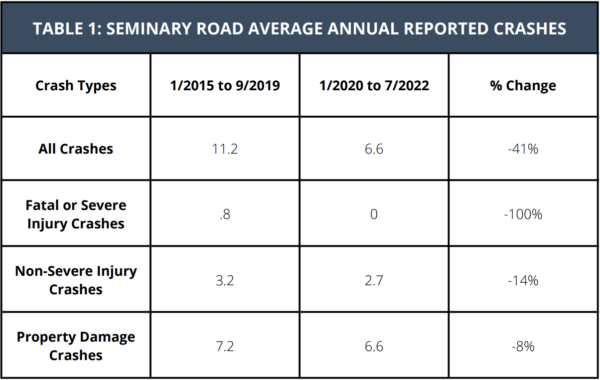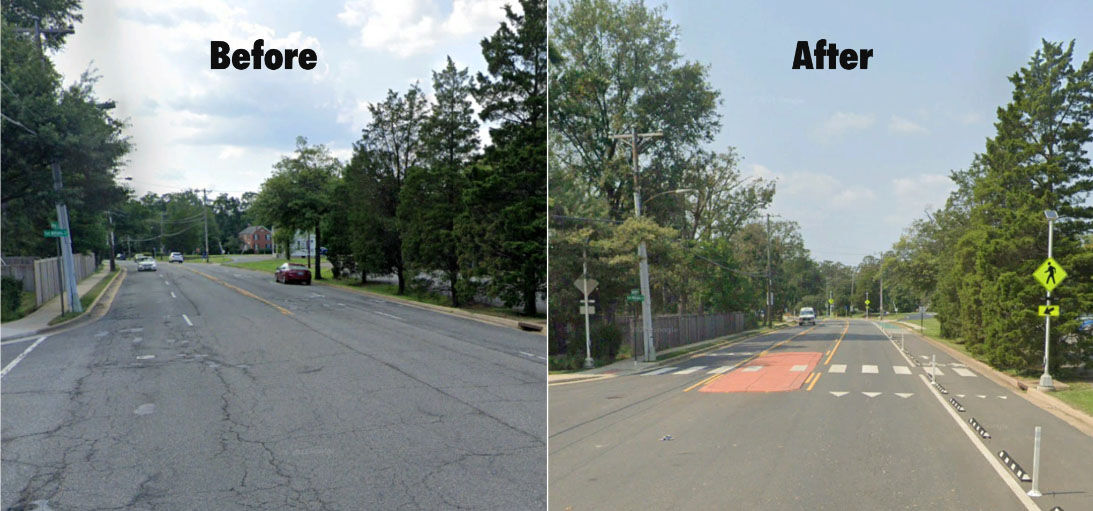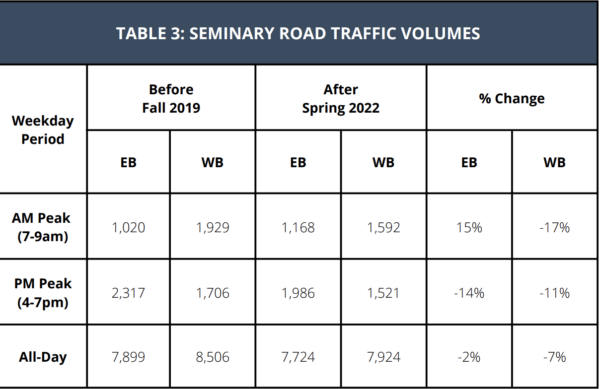The reduction in the number of lanes on Seminary Road in Alexandria, Virginia, in 2019 led to less traffic and fewer crashes on the busy corridor, according to a report from the city.
The report from the city Department of Transportation and Environmental Services found that reducing lanes on Seminary Road between North Howard Road and Quaker Lane — known as a “road diet” — decreased average annual crashes by 41%, from 11.2 in the nearly five years before the change to 6.6 since January 2020.
The report also found that no crashes occurred in which someone died or was seriously injured after the changes. However, only one severe crash was recorded on the one-mile stretch from 2015 to 2019.

“Overall, the project has met its stated goals and objectives by enhancing mobility, access, and safety for people walking and biking, while minimizing impacts to motorists,” the report concluded.
The report is based on data gathered from the spring of 2022 and compares it to data from before the changes were made.

The city completed the project in the winter of 2019, reducing the four-lane highway to one lane of travel each way, adding a center turn lane and bike lanes. Four new pedestrian crossings were also created.
The study found that traffic volume during peak travel times decreased between 11% and 17% when the lane reductions went into effect, except in eastbound lanes during the morning rush hour, where volume increased by 15%.

Travel times also decreased on Seminary Road by 35 seconds, to just over a minute, and the data showed traffic did not divert to neighboring streets. Only Fort Williams Parkway saw an increase in both directions of 12% to 33%.
Bike riders seemed to like the change: Bike ridership increased by 75% during morning and evening commute times, although the numbers remain small — there were just four cyclists recorded at the intersection of Seminary Road and Fort Williams Parkway on peak days in the fall of 2019, compared to 16 cyclists in the spring of 2022.
Pedestrian use of the road decreased by around 22%, from about 59 pedestrians at the same intersection on peak days in the fall of 2019 compared to 46 in 2022.








